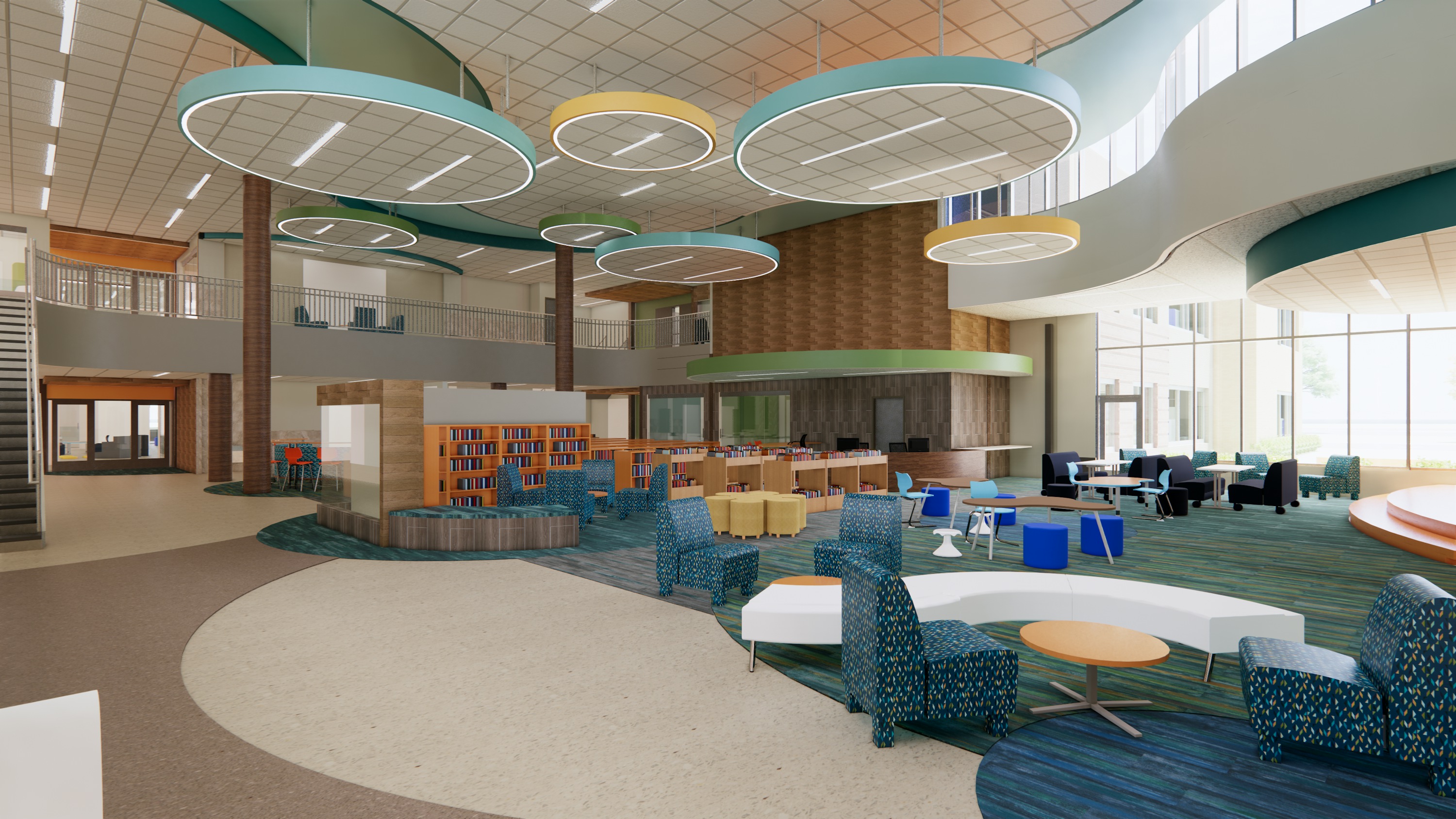
Over the past few years, one of the biggest architectural design trends has been creating K-12 school spaces focused on personalized learning, an educational approach that aims to customize learning for each student’s strengths, needs, skills, and interests.
Many schools are beginning to transition from more traditional teaching methods to increased student agency, project-based learning, and college and career-focused options. To help realize students’ full potential, schools must shape learning around the individual needs of today’s learners. Forward-thinking educators are championing the idea that each student has unique gifts and deserves to find their own path to learning.
We recently asked education design experts and educators Paul Aplikowski, partner at Wold, Jeff Ronneberg, superintendent at Spring Lake Park Schools, Jason Berg, superintendent at Farmington Area Public Schools and Wayne Kazmierczak, superintendent at White Bear Lake Area Schools, for their predictions on what classrooms of the future will entail. Continue reading for their insights.
As the world becomes more team-centered and collaborative, our schools need to follow suit. Schools must prepare students for work environments that diverge from the past in unimaginable ways. To meet this challenge, it’s essential for schools to become more dynamic, engaging, and captivating to draw students into a collaborative environment with their peers and teachers.
Buildings can support and transform the learning environment by providing diverse settings and resources. The need for dynamic and flexible spaces will change typical classrooms into "learning studios" where students can engage in their passions while educators guide their learning.
Classrooms of the future put learners at the center of the design, creating conditions where students become active agents of their own learning. This transitions educators from being the center of attention within a single classroom to designers of learning.
There are many questions one can ask when thinking about the design of these classrooms: what is the experience you want learners to have? What do you want them to investigate and create dialogue around? What work will you design for students that is so meaningful and relevant that they choose to volunteer their time and attention? This type of work is not done in isolation by a single educator, but requires the creativity of a team of educators who serve a shared group of students.
Thus, the classrooms of the future will transition from individual, teacher-centered classrooms to flexible, learner-centered environments that support the changing role of teacher and learner. These environments require spaces and furniture that are flexible and able to adapt throughout the day to capitalize on the creativity of teams of teachers designing around the unique and varied needs of their learners.
Classrooms of the future will be learning-centered; this means they will be able to support learner experiences based on the needs of each learner in that space and not simply based on the "class" or "grade level" they support. Classrooms will leverage a variety of available technologies to support learners’ needs within that space. They will be flexible and adaptable.
I see current classrooms as one-dimensional spaces that serve a very limited purpose, but classrooms of the future will be multi-dimensional. They will be able to support large groups, small groups, and individual learning experiences alike.
In White Bear Lake Area Schools, our strategic plan has driven our facilities planning to ensure alignment of our spaces with how we view learning and teaching for the next generation. The first step in our facilities planning was essential and began with pulling together a group of staff, students and community members to discuss and design our future of learning. We had robust conversations that focused on facility and programmatic standards.
The team committed to a design that is future-ready and inclusive, allowing learners to explore their evolving interests and develop a sense of community. As students lead their learning, we support and guide them in the educational journeys they choose to pursue. We are already seeing the benefits of structuring the learning environments to be forward-thinking.
To create student agency, Wold has designed an educational space called a Learning Studio. A Learning Studio is a tapestry of spaces that ground learners and educators in the possibility that their learning environment can be an essential tool in shaping their experience, rather than just the four walls around them. Everything, including furniture, technology and operable walls, is multi-functional in the Learning Studio and makes it flexible in every aspect.
A typical Learning Studio is designed around a cohort of learners, typically between 125 to 200, and their instructors. Within the Learning Studio, no two spaces follow the same design. Traditionally, equity among the teaching staff was thought to be the highest priority for classroom design. In the Learning Studio, each space is instead designed around a unique need: large group, small group, independent learning, maker space, student storage, intervention, instruction support, calming, curriculum or professional office space.
Learning Studios can unify students of all ages and backgrounds, from elementary to high school. As school design evolves for future generations, Wold is proud to work with pioneering districts on innovative projects, including Centerview Elementary School in Blaine, Minn. and Owatonna High School in Owatonna, Minn., to design spaces that enhance personalized learning and inspire tomorrow’s students.